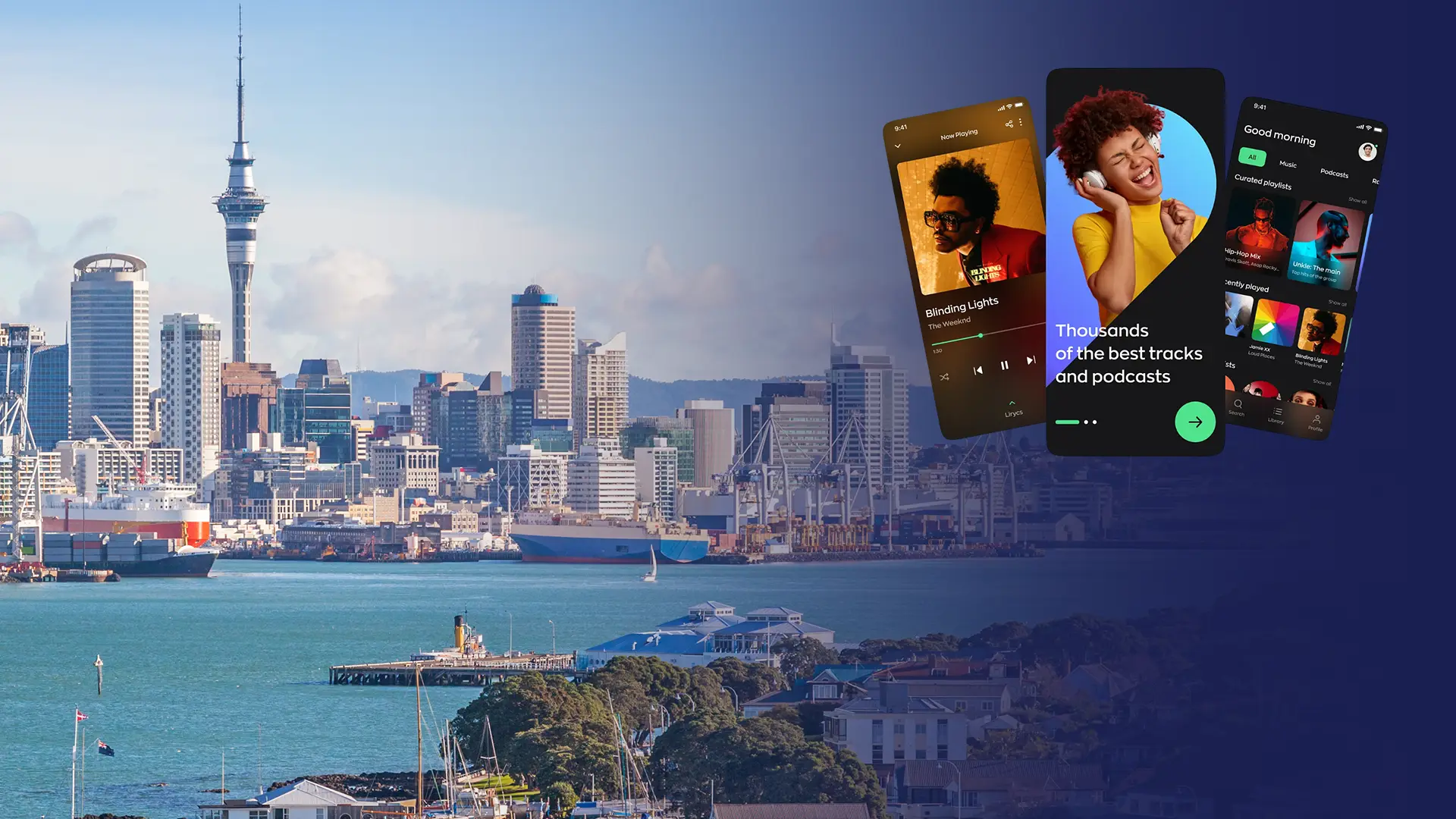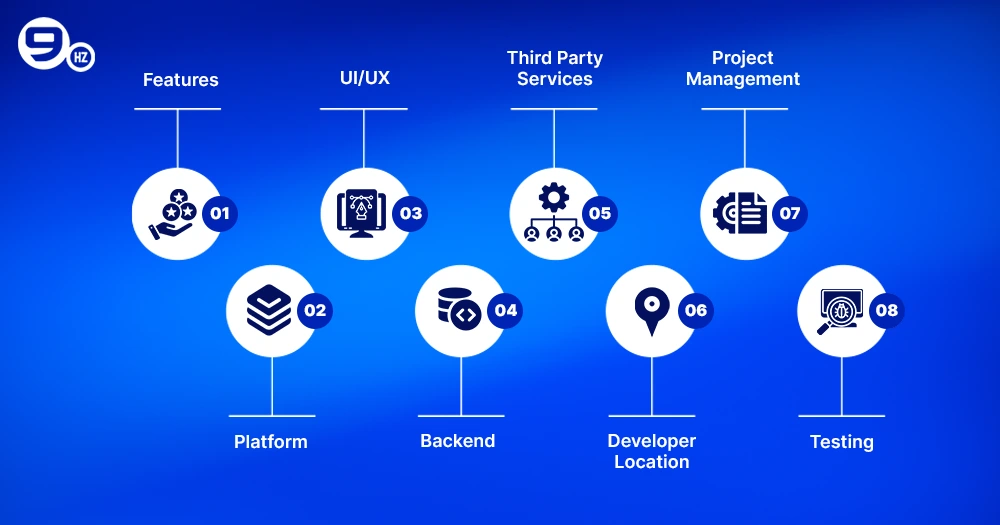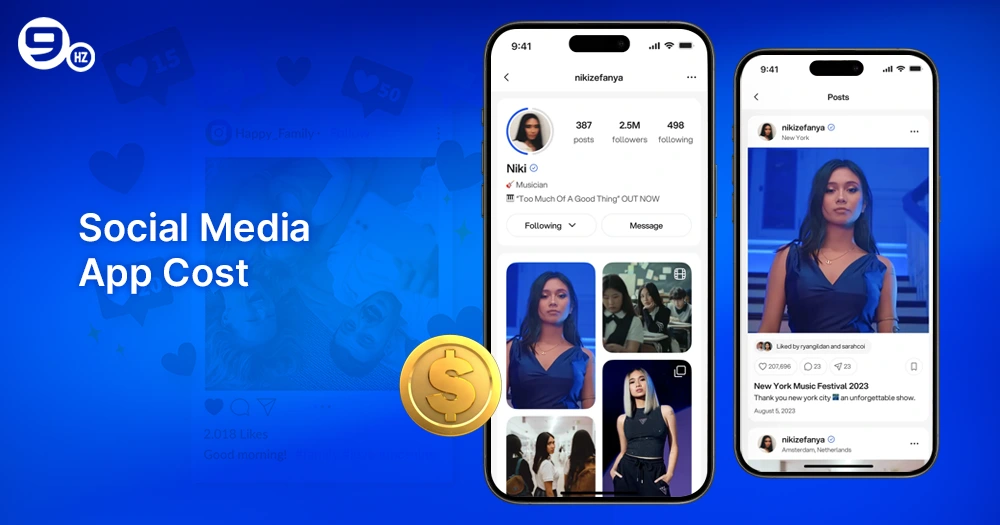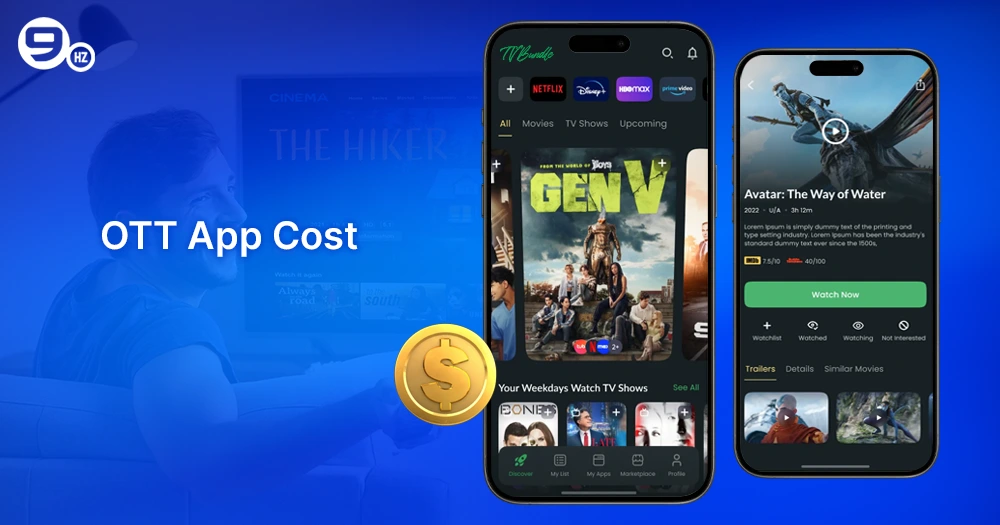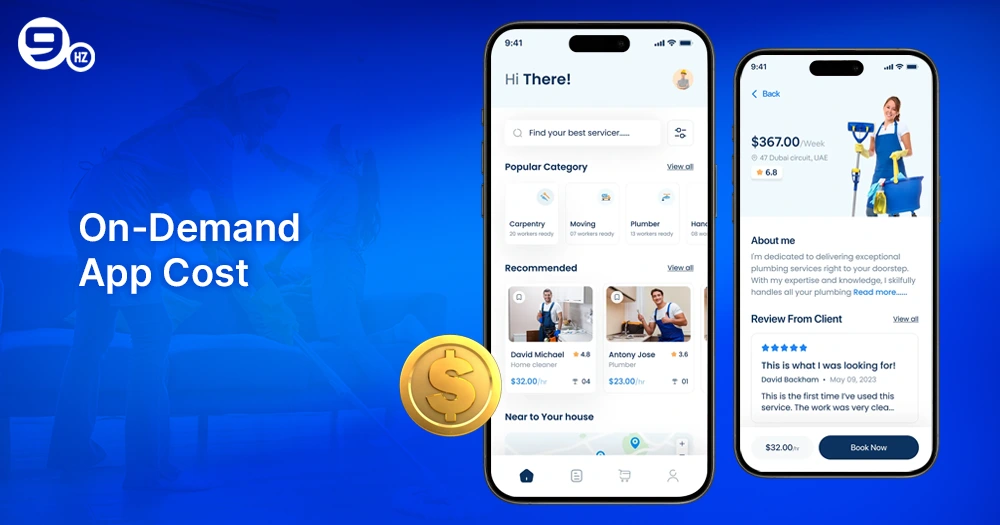Have you ever wondered why startup companies in 2025 are racing to launch mobile apps in New Zealand? It’s not simply because of digital transformation anymore; it’s about proving they are still relevant in the rapidly changing market. Companies that do not embrace mobile-first strategies are willfully and quietly being left behind, while the dynamic, innovative app solutions become the norm.
By the end of 2025, the global mobile app industry is expected to generate revenue of over $935 billion. Businesses that invest in mobile solutions are seeing up to 200% higher customer engagement compared to their offline counterparts. With New Zealand’s growing technology space supported by government interest and a digitally literate population, the demand for mobile apps has never been higher; with over 70% of Kiwis actively using mobile applications to shop, bank, learn, and connect, mobile solutions are part of doing business in New Zealand.
Nonetheless, knowing the mobile app development cost in New Zealand is not always an easy process. There can be literally hundreds of costing variables, and the cost continues to spiral on every question pretty quickly. Cost variables can be based on app complexity, app features, and app platforms. We also have to factor in NZD / USD cost ratios, and depending on who is developing your app, region and complex logistics. Whether you, as a small business owner, are exploring developing digital tools or you are an enterprise user planning the entire custom mobile app development, knowing the cost of developing an app in New Zealand should enable you to plan effectively and maximise your budget and slowly erase unexpected costs.
Within this blog, we analyze the pricing framework, variable factors, and average costs for a variety of industries to present a risk-free guide to undertaking mobile app development within New Zealand.
What is Mobile App Development?
Mobile app development is the discipline of programming software applications for a mobile device, such as a smartphone or a tablet, and sometimes for devices such as wearables. Applications, whether for business or consumer use, are created to provide well-designed and seamless user experiences as well as solve specific user or business problems – from booking a ride to monitoring chronic health conditions.
Mobile app development essentially has multiple stages: planning, UI/UX design, coding, testing, deployment, and maintenance. Depending on the app’s platform – iOS mobile apps, Android mobile apps, or hybrid – and complexity, developers will choose different programming languages and frameworks.
Mobile apps are mainly of three categories:
- Native Apps: These mobile apps are specifically made for one platform (iOS or Android) with specific languages, such as Swift for iOS or Kotlin for Android.
- Hybrid Apps: Hybrid mobile apps are developed with web technologies like React Native, Flutter, etc., with one codebase for multiple platforms.
- Progressive Web Apps (PWAs): Web applications are apps that can function like native mobile apps but run through browser applications.
Mobile apps are no longer considered just as a digital layer; they are a strategic approach for brand visibility, customer engagement, and generating revenue.
Mobile App Development Cost in New Zealand [An Overview]
When it comes to mobile app development cost in New Zealand, it is important to understand that there is no standardized pricing structure. The costs can vary so dramatically based on the complexity of the app, required features, and whether you are using a local agency, freelance developers or an offshore development partner.
That being said, businesses that hire local mobile app developers in New Zealand can expect to receive a quality-driven response, strong communication and the benefit of working in the same timezone.
The table below provides a guide to the roughly estimated mobile app development cost in New Zealand for all levels of app complexity.
| App Complexity | Estimated Cost (NZD) | Development Timeline |
|---|---|---|
| Simple/Baseline App | $25,000 – $45,000 | 2 – 3 months |
| Medium Level App | $45,000 – $90,000 | 3 – 6 months |
| Advanced App (AI, AR, etc.) | $90,000 – $200,000+ | 6 – 12+ months |
| Cross-Platform Apps | $40,000 – $120,000 | 3 – 7 months |
| Enterprise-Level App | $150,000 – €300,000+ | 8 – 12+ months |
These figures represent average industry pricing in New Zealand and may vary based on developer rates, app category, and third-party integration requirements.
Whether you are developing a consumer-facing app or an internal enterprise app, having an idea of the cost of mobile app development in New Zealand upfront can minimize the scope and keep track of the budget.
Key Factors Affecting Mobile App Development Cost
When deciding to build a mobile app, it is also influential to know what actually determines the cost of creation. The cost of mobile app development in New Zealand is affected by many variables: some are technical, and some are strategic.
The main elements influencing the cost of developing a mobile app in New Zealand are examined in further detail below:
1. App Complexity and Features
This is one of the most important factors influencing pricing. An app with only limited functionality is much cheaper than an app that is feature-rich and dynamic.
- Basic App (e.g., basic listing app for a local business): You can have static content, a contact form, login functionality and simple navigation.
- Medium Complexity App (e.g., a food delivery app or a fitness tracker app): You can have GPS tracking, user profiles (menu), API integration, and push notifications.
- High Complexity App (e.g., an AI-driven healthcare app or OTT platform): You can have real-time functionalities, payment systems, chatbot, AR/VR, IoT integrations, and multi-language capabilities.
Every added feature creates more development hours, increased technical requirements and testing. Each one is an added dimension to the overall cost of mobile app development throughout New Zealand.
Pro Tip: Rather than launching a fully-featured app, you could launch with a Minimum Viable Product (MVP) that proves your idea without spending excessive money on the entire project, and then reiterate improvements according to user feedback.
2. Platform Choice (iOS, Android, or Both)
Platform strategy also greatly influences pricing capabilities. If you go native for both iOS and Android, you will have two separate code bases, so you will double the effort and cost.
- iOS-specific or Android-only App: This is well-suited for small businesses that are looking to validate a market.
- Cross-Platform App Development (Flutter, React Native): The code needs to be written just once, and can be deployed everywhere. It is more cost-effective and saves time.
- Native App Development: It offers better performance but is usually expensive.
In New Zealand, it would be common for a startup to opt for cross-platform apps to balance performance and affordability while reaching a wider audience faster.
3. The Level of UI/UX Design
Design isn’t merely about the way that it looks and feels; it is fundamentally the entire user experience. The better the experience, the better engagement and retention; however, this level of design requires skill and time.
Some key design aspects that drive project cost include:
- Custom design and branding
- Micro-interactions and animations
- User journey and wire framing
- Accessibility and responsive design for all devices
Spending money on UI/UX upfront can reduce churn and enhance your app’s long-term value.
4. Backend Infrastructure and Architecture
The end-user interacts with the front-end of the app; however, the backend drives the engine behind the scenes. Applications dependent on real-time data, user logins, media uploads or payments will depend on a reliable backend system.
Some of the elements which impact development cost include:
- Server set-up and cloud storage (AWS, Google Cloud)
- Real-time databases (Firebase, MongoDB)
- Third-party API’s and SDKs
- Admin panels and dashboards
A scalable backend infrastructure is more crucial if you are building an enterprise-grade or consumer-facing application, particularly in sectors like health, fintech, and media.
5. Location and Type of Development Team
In New Zealand, deciding on what app you are building is equally as important as who you are building it with. If you are doing app development in New Zealand, using local development agencies usually means that you will have better collaboration and adherence to local regulations, but it might cost more than offshore teams.
Here is a general comparison of the hourly rate of mobile app developers on different regions:
| Team Type | Average Hourly Rate (NZD) |
| Freelancers | $40 – $80/hr |
| Offshore Teams (Asia) | $25 – $60/hr |
| Local Agencies (NZ) | $90 – $160/hr |
Hiring a reputable mobile app development agency in New Zealand provides localized support, clear communication, and quality assurance.
6. Security Requirements
If you’re storing sensitive data with your app, perhaps in the finance, medical, or e-commerce sectors, you will have cumbersome data protection legislation that you need to consider (e.g. requirements in the General Data Protection Regulation (GDPR)). You may have to:
- Data stored that is encrypted
- Secure user authentication
- Conduct compliance audits
While implementing security may mean increased costs and longer development times, protecting your business from an expensive security breach is worth it.
7. Ongoing Maintenance and Support
Once the app is launched, there are still many costs to be considered. On-going updates, new OS compatibility, bug fixes and server charges should all be considered. Most agencies recommend an annual maintenance budget of 15-20% of the original development cost.
Some of the common things you will need to stay on top of include:
- New versions of operating systems for iOS and Android.
- Security updates.
- Improvements to performance.
- Ways to implement user feedback.
Ignoring the need for updates and maintenance post-release will probably result in your end-users being disappointed. Ultimately, some users may grow to dislike your app enough that they will recommend other apps on the App Store/Google Play Store, or the app will be removed from the platforms.
8. Use of Third-Party Integrations and APIs
Many apps use third-party services to facilitate features or speed up development so that the app itself isn’t built from scratch. Some of these services come with a recurring fee, with many of them also incur a licensing cost.
Some of the more popular integrations include:
- Payment gateways (such as Stripe or PayPal)
- Maps and location services (such as Google Maps or Mapbox)
- Chat and messaging APIs (such as Twilio or Sendbird)
- Analytic tools (such as Mixpanel or Firebase Analytics)
While using reputable integrations can save you time in a development cycle, you should consider the budget for the external costs. The cost of building a mobile app in New Zealand is something often overlooked during the estimate.
By recognizing these aspects, you can forecast better and budget wisely. Ultimately, this leads to your mobile app project in New Zealand being built not just for launch, but also for long-term success.
Breakdown of Mobile App Development Cost in New Zealand [Various Stages]
Business planning for an app often fixates on the final price tag. The mobile app development cost in New Zealand is not a standalone price; it’s a process divided into several stages that each require a share of your budget, time, and focus.
Knowing how this cost breaks down during the app development lifecycle gives you a transparent view into where your money is going, and more importantly, why it is going there.
Let us explore each development stage in detail:
1. Discovery and Planning Stage (5 – 10%)
Before any coding or design work can begin, every successful mobile app starts at the same place: with proper planning. This planning phase sets the entire application, and without it, you risk setting vague goals, reworking, or, even worse, failing entirely.
During the planning phase, the development team will work with key stakeholders to clearly define:
- The key purpose of the app
- Target audience and their pain points
- Competitive benchmarks
- The features you must have vs. the features that would be nice to have.
- Expectations within budget and timeline
Deliverables will include a project roadmap, a list of features and initial wireframes. The developers may also provide a feasibility analysis, in which you are looking to see if the concept is feasible, both from a technical and business product view.
Tip: Investing in planning reduces costly revisions later. Think of it as creating the blueprint before building a house.
Estimated Cost: NZD 2,500 – NZD 10,000
Duration: 1-2 weeks
2. UI/UX Design Stage (10 – 15%)
Now that we have developed a plan, it is time to think about the overall appearance and feel of the app. Design can be one of the most differentiating factors when comparing applications. A poorly designed app can lose users instantly, regardless of how well the app functions.
In New Zealand, design agencies are user-centric, focusing on experience and brand consistency. They would typically do the following:
- Create wireframes of key screens
- Design user flows that are intuitive to follow
- Develop high-fidelity mockups
- Create responsive layouts for multiple devices
- Design brand colours, icons, and typography
Usually, interactive prototypes are built in Figma or Adobe XD to simulate the app experience before any development begins.
The app’s design is not just visual – it describes how enjoyable, straightforward, and effective it is for users to perform tasks.
Estimated Cost: NZD 8,000 – NZD 25,000
Duration: 2-4 weeks
3. Frontend & Backend Development (40 – 50%)
This is where your app will come to life.
- The front-end development includes all that the user sees – screen layouts, buttons, animations, transitions, etc. If your app’s UI design is weak or slow to respond, it must work with the front end.
- The back-end development is server-side logic: databases, user authentication, APIs, and cloud storage.
Depending on your app type, app developers will either use native technologies like Swift for iOS and Kotlin for Android or frameworks like Flutter and React Native to develop cross-platform apps.
In New Zealand, development standards typically use an agile method of working where features are delivered iteratively in sprints, allowing for testing and iterative improvement throughout the process.
The complexity of the app will impact the test stage; apps that demand real-time tracking, a secure login, or greater user concurrency will potentially require a lot more backend infrastructure.
Estimated Cost: NZD 25,000 – NZD 100,000+
Duration: 2-6 months.
4. Testing & Quality Assurance (10–15%)
Understanding testing is vital for modern mobile app development. In New Zealand, most development standards follow an agile methodology, which means features are regularly released; this is called an iterative approach or a sprint. This process allows for testing and improvements to be made along the way.
Even the most perfect app can ruin its reputation if it is buggy, slow, or crashes unexpectedly due to high volume. This is why testing is a significant element of modern skills which separates a developer from a programmer or coder, and it is an iterative, ongoing process, rather than just being at the end.
Some areas to test include:
- Functional Testing (Do the features work?)
- Usability Testing ( Is it easy for the user?)
- Compatibility Testing (Does it function correctly across the range of devices / operating systems?)
- Performance Testing (How does the app behave under load?)
- Security Testing (Is the data secure?)
It is important to properly check that the app performs as required using both manual and automatic testing tools.
Launching the app without testing could ruin your reputational, might result in a poor rating, and ultimately lead to a costly fix.
Estimated Cost: NZD 6,000 – NZD 20,000
Duration: 2 – 4 weeks
5. Deployment and Launch (5%)
Once you have received stakeholder sign-off after testing, your app is ready for a production deployment. Deployment is not just a technical matter, but also a non-technical matter which includes marketing, compliance with local and regional laws, and optimising for app stores.
Activities include:
- Setting up back-end servers
- Finalising icons, launch screen images and metadata
- Submitting to the Google Play Store or Apple App Store
- Implementing app store optimisation (ASO)
- Installing crash reporting and analytics tools
App review times vary depending on the platform. Apple tends to have a stronger review process than Google.
Make sure you are adhering to all regional data privacy laws (e.g., New Zealand’s Privacy Act and potentially the GDPR if delivering services to users in Europe).
6. Post-Launch Support and Maintenance (15 – 20% Annually)
The launch is not the end, but the start of the app’s life. Continuous monitoring and maintenance of the app mean it remains relevant, secure, and competitive.
Tasks to be completed in this phase:
- Fixing bugs and crashes
- Updating APIs/SDKs
- Implementing new features as a result of user feedback
- Monitoring user behaviours through analytics
- Keeping up to date with operating system updates and new devices.
In New Zealand, most development companies provide long-term maintenance contracts or support plans.
Apps that get regular updates will help build trust and keep users engaged at a high level.
Annual Cost: 15 – 20% of initial development cost
For a NZD 90,000 app, this equates to NZD 13,500–18,000 per year.
By breaking costs down into stages, you’ll have the opportunity to plan your budget more accurately. It’s also easier to get appropriate investor support or internal approvals because each stage has its own deliverables. Ultimately, the cost of mobile app development in New Zealand depends not only on what you build, but how well you plan the cost and each stage.
Cost to Create a Mobile App in New Zealand [Various Types]
Not all apps are created equal; each type of app has different technical requirements, regulatory aspects, and user expectations. Accordingly, the cost of mobile app development in New Zealand can vary widely based on the type of app you’re developing.
Here’s a complete breakdown of what it might cost to develop various types of mobile apps in 2025. We’ve based our assessments on actual use cases, need for features, and ever-changing platform preferences, among other influences.
A) The Healthcare App Development Cost in New Zealand
Healthcare app development will require the highest standards of security, compliance and accuracy. No matter if they are a telemedicine platform, a patient record app, or a symptom checker, the app must comply with both HIPAA (for the U.S.) and New Zealand’s Health Information Privacy Code.
Key features are:
- Patient profiles and appointment booking
- Video consultations and in-app chat
- E-prescriptions and medication tracking
- Wearable integration (heart rate, sleep data)
- Secure data encryption and cloud storage
Healthcare apps often require ongoing compliance updates, which add to long-term costs.
Estimated Cost: NZD 100,000 – NZD 250,000
Timeline: 5-9 months
B) Fitness App Development Cost in New Zealand
Fitness apps have exploded in the last several years since the pandemic. Obviously, users want to exercise, but they also want to personalize their wellness journey and tailor their path to their goals, aspirations, or niche interests. Fitness apps can be as simple as a workout diary, or they can utilize complex AI and have multiple coaching plans.
Key features are:
- Workout routines and video tutorials
- Daily progress tracking
- Wearable integration (Fitbit, Apple Watch)
- Push notifications and motivational badges
- Diet planners and calorie counters
- Depending on the level of customization and gamification, pricing can vary widely.
Estimated Cost: NZD 60,000 – NZD 130,000
Timeline: 3-6 months
If you are looking for custom fitness app developers, The NineHertz is the leading fitness app development company.
C) Social Media App Development Cost in New Zealand
When you are building a social media app it is more than just messaging users, you are developing a high-engagement company that potentially has performance requirements, is delivering real-time data, and has much stricter moderation requirements than a traditional app.
Key features are:
- User profiles, stories, and content feeds
- Real-time chat and notifications
- Likes, shares, and comments
- Video streaming and media uploads
- User reporting, blocking, and moderation systems
Tip: Social apps must be scalable from day one due to their viral growth potential.
Estimated Cost: NZD 120,000 – NZD 300,000+
Timeline: 6-10+ months
D) OTT App Development Cost in New Zealand
OTT (over-the-top) apps such as Netflix, Disney, and others continue to be highly sought after, and companies like the ones mentioned must utilize some of the most sophisticated infrastructure available today, processing their content safely and securely.
Key features are:
- Subscription management and payment gateway
- Content categorization and recommendations
- High-resolution streaming with adaptive bitrate
- Digital rights management (DRM)
- Multi-device compatibility (TV, mobile, desktop.
- Due to storage, content delivery, and encryption needs, OTT apps are among the most expensive to build.
Estimated Cost: NZD 150,000 – NZD 350,000+
Timeline: 6-12 months
Hire a best OTT app development company to build an OTT platform.
E) Booking/Appointment App Development Cost
Booking apps are ubiquitous across industries, from beauty salons to doctors, consultants, automotive services, etc. The complexity grows when the system must manage real-time working availability or if it integrates payment processing functions.
Key features are:
- Calendar integration and time slot selection
- SMS/email reminders
- In-app payments and cancellation policies
- Admin dashboards
- Google Maps and location services
Tip: For businesses with multiple service providers, admin management features will increase the development cost.
Estimated Cost: NZD 40,000 – NZD 90,000
Timeline: 2-4 months
F) On-Demand Delivery App Development Cost
On-demand apps such as Uber Eats or local courier services require (spatial) complex back-end processes to manage real-time detail surface changes, user tracking, and payment processes.
Key features are:
- Dual interfaces (for users and service providers)
- Real-time order tracking
- GPS and delivery route optimization
- In-app payments and tips
- Ratings, reviews, and order history
These apps are best developed using a modular architecture so you can scale across cities and service verticals.
Estimated Cost: NZD 80,000 – NZD 200,000
Timeline: 4-8 months
Understanding how app category affects pricing will help you prioritise features that fit your budget and provide your business background material and work plan. Each app category has associated risks, infrastructure requirements, and expectations, impacting costs pertinent to mobile app development in New Zealand.
Read Also:
Cost to Develop Mobile App in Sweden
Cost to Develop Mobile App in France
Cost to Develop Mobile App in Germany
Cost to Develop Mobile App in Australia
Conclusion
As mobile technologies continue to disrupt a wide variety of industries, a mobile app has evolved from a luxury into a competitive necessity for organisations at all levels. Whether you are a small start-up aspiring to launch your first scalable MVP or an enterprise solution provider with sophisticated objectives, knowing mobile app development pricing in New Zealand is the first step towards effective planning.
New Zealand is a preferred destination for contractors to engage with app development because of the diversity of work talent, open communication, and high-quality technology services. The final cost of your app will always be influenced by the features, level of complexity, app platform, and future objectives.
From basic booking systems to AI-enabled healthcare applications, each category has its own price range. By planning for each stage of development, in a straight line from discovery and development through to post-launch support, you will be able to avoid scope creep, delays, and unexpected costs.
If you’re searching for a mobile app development company in New Zealand, look for partners like The NineHertz that understand and can deliver on your requirements, but that also has a clear understanding of your vision.
Ultimately, the cost of mobile app development in New Zealand is an investment in digital transformation, revenue generation and ultimately business growth.
Frequently Asked Questions
Let us discuss some of the commonly asked questions related to mobile app development cost in New Zealand in 2025:
1. How Much Does it Cost to Build a Mobile App in New Zealand?
The mobile app development cost in New Zealand ranges from NZD 40,000 to NZD 300,000+. This depends on several factors, including app complexity, platform (iOS, Android, or both), features, backend infrastructure, and development timelines.
2. What Type of Apps Cost the Most to Develop in New Zealand?
The most expensive apps are those with advanced features like AI, AR/VR, real-time data processing, or secure transactions, such as OTT platforms, social media apps, or healthcare solutions. The cost of mobile app development in New Zealand increases with the complexity of the tech stack and third-party integrations.
3. Can I build a Mobile App in Phases to Manage the Cost Better?
Yes, many businesses begin with a Minimum Viable Product (MVP) that includes core functionalities. This allows you to enter the market faster, gather user feedback, and gradually scale features, reducing your upfront mobile app development cost in New Zealand and lowering financial risk.
4. How Much Should I Budget Annually for App Maintenance?
On average, businesses should allocate 15–20% of the original development cost per year for updates, bug fixes, security patches, and feature enhancements. For instance, if your app costs NZD 100,000 to build, expect to spend NZD 15,000-20,000 annually on maintenance.
Great Together!
